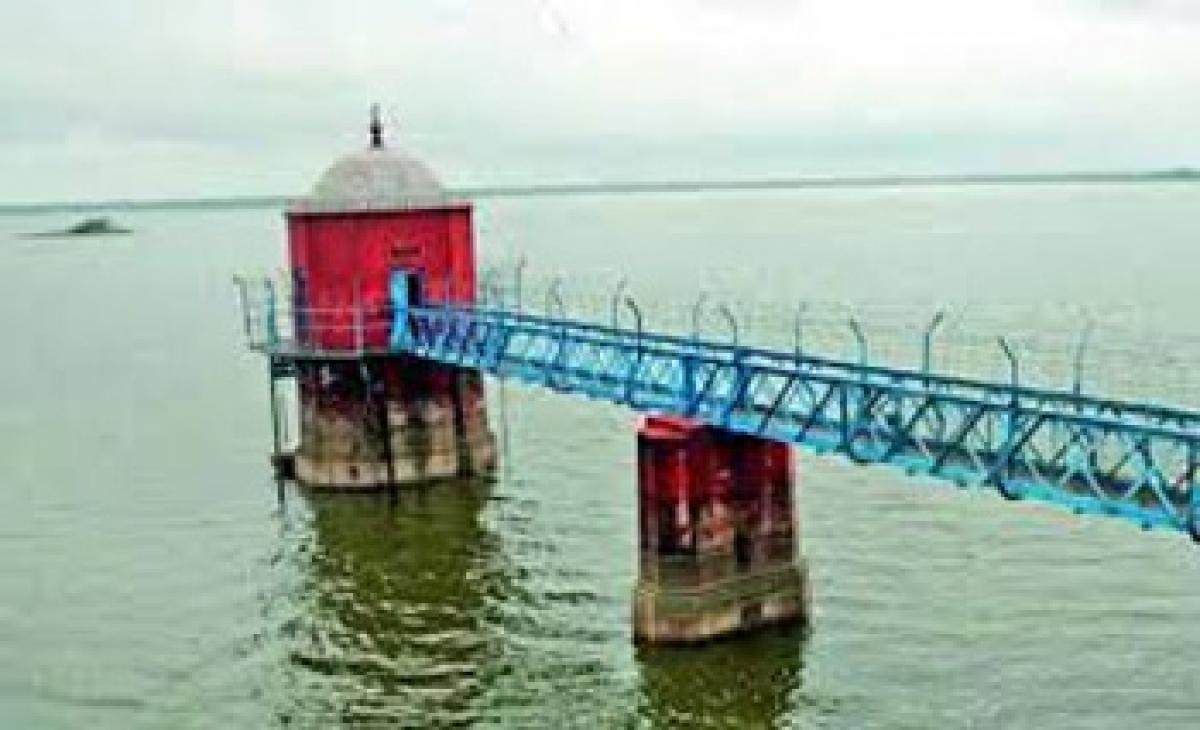Live
- Ahsaas Channaopens up about her complex character in ‘Mismatched 3’
- Radhika Apte welcomes first child, shares heartfelt post
- Jacqueline dazzles at Da-Bangg Reloaded concert
- Time to boost measures to prevent drowning, save children: WHO
- TDP achieves milestone with 73 lakhs membership registration, says Chandrababu
- South Korea: Main Oppn hails Yoon's impeachment motion passage as 'victory for people, democracy'
- RG Kar issue: Tension flared over parallel protests by Congress, SUCI(C) outside CBI offices
- After furore, Central Railway revokes order to raze Lord Hanuman Temple at Dadar
- Now hoteliers' body in Bengal's Alipurduar shut doors for Bangladeshi tourists
- District Collector Encourages Students to Utilize Government Facilities for a Better Future
Just In
Water Grid Project to become operational in three years


The ambitious Water Grid Project (WGP) of the State government will have to wait for about another two years to take off. The three-tier WGP need all required components to be in place to make it operationalise. According to Irrigation department sources, the three-tier WGP conceptualised by the government is somewhat akin to the Gujarat’s water grid scheme. However, the authorities have to put i
A host of preliminary works including tapping of surface water, which in turn includes linking of Vamsadhara – Nagavali, Krishna- Penna, and Godavari - Krishna through Pattiseema Lift Irrigation Scheme (PLIS) have to be taken up before getting onto actual works
Hyderabad: The ambitious Water Grid Project (WGP) of the State government will have to wait for about another two years to take off. The three-tier WGP need all required components to be in place to make it operationalise. According to Irrigation department sources, the three-tier WGP conceptualised by the government is somewhat akin to the Gujarat’s water grid scheme. However, the authorities have to put in extra effort to ground the project in the State.
“There are three components in the WGP of the State and each one of the component complement one another,” said a senior official from the State irrigation department.As part of the project, the State government’s first priority is to complete all the irrigation projects to tap the surface water. “Without tapping the surface water we cannot depend on the ground water alone for the purpose of WGP,” sources pointed out.
Completion of project related to tapping the surface water includes linking of Vamsadhara – Nagavali and Krishna- Penna link besides the State government’s another initiative of linking Godavari – Krishna through Pattiseema Lift Irrigation Scheme (PLIS).
“The entire 24 pumps of the PLIS would be operationalised by the end of this March as per schedule and Chief Minister N Chandrababu Naidu will inaugurate it,” they added.That apart, the State government has already prioritised to take up the pending minor and medium irrigation project and other schemes, around 20 to 25 small rivers, streams and rivulets in next two years.
Besides, there are also 15 additional rivers. But, irrigation department sources said: “As the catchment areas of these rivers are spread in other states, the first priority is to complete the irrigation schemes on the rivers with catchment area falling within the state.”
The priority projects to be completed in next two years, perhaps by the end of 2018, include phase II in stage II of BRR Vamsadhara Project (BRRVP), Thotapalli Barrage Project (TBP), Polavaram Right Main Canal (PRMC) and Polavaram Left Main Canal (PLMC), Poola Subbaiah Veligonda Project (PSVP), KOR Gundlakamma Reservoir (KOR-GR), phase-I of Galeru-Nagari Sujala Sravanthi (GNSS) and Handri Neeva Sujala Sravathi Project (HNSSP).
Alongside, for next two years, the minor irrigation department has been asked to give priority to identify and develop Cascade Development of Tanks (CDT) project. Under this, “the department would identify tanks located at higher contours from the ground level. Also, clearing the bottlenecks and encroachments in the way of feeder channels, within the catchment of each of such tanks would be taken up on priority basis.
Once this is carried out, then, water would be taken down to the tanks located at the lower contours by way of gravity and for storage, mainly for drinking water purposes.”Similarly, the Panchayat Raj department in co-ordination with other line-departments would be taking up building water harvesting structure in a big way for ground water recharge. The agriculture department, on its part, chalked out an action plan to encourage farmers to dig farm-ponds in their agriculture fields.
“The farm-ponds scheme has been taken up on mission mode and each district will have around one lakh farm ponds. By this way, the government hopes that about 13 lakh farm-ponds would help in recharging the ground water in the rural areas. Besides, the same farm-ponds could also be used as water storage tanks to provide four to five rounds of wetting to the standing crops, in case of dry spells during the agriculture season. Particularly, this is helpful in the rain-shadow areas,” the officials clarified.
Further Irrigation department sources also pointed out that “taking water with less-lift and more by gravitation, the WGP of the State combines the optimum utilisation of rain water, ground water and surface water to meet the drinking and agriculture needs, besides catering to the industrial needs of the State.”

© 2024 Hyderabad Media House Limited/The Hans India. All rights reserved. Powered by hocalwire.com






